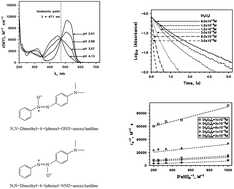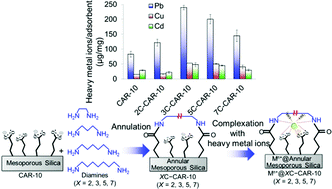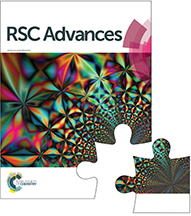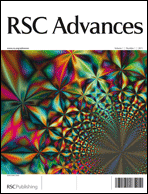Do you want to know what your colleagues were reading during 2012? The following articles in RSC Advances were the most accessed over the course of the year:
Graphene–inorganic nanocomposites
Song Bai and Xiaoping Shen
RSC Adv., 2012,2, 64-98
DOI: 10.1039/C1RA00260K, Review Article
Graphene oxide and its reduction: modeling and experimental progress
Shun Mao, Haihui Pu and Junhong Chen
RSC Adv., 2012,2, 2643-2662
DOI: 10.1039/C2RA00663D, Review Article
Graphene-based photocatalytic composites
Xiaoqiang An and Jimmy C. Yu
RSC Adv., 2011,1, 1426-1434
DOI: 10.1039/C1RA00382H, Review Article
Recent developments in solvent-free multicomponent reactions: a perfect synergy for eco-compatible organic synthesis
Maya Shankar Singh and Sushobhan Chowdhury
RSC Adv., 2012,2, 4547-4592
DOI: 10.1039/C2RA01056A, Review Article
Graphene quantum dots with controllable surface oxidation, tunable fluorescence and up-conversion emission
Shoujun Zhu, Junhu Zhang, Xue Liu, Bo Li, Xingfeng Wang, Shijia Tang, Qingnan Meng, Yunfeng Li, Ce Shi, Rui Hu and Bai Yang
RSC Adv., 2012,2, 2717-2720
DOI: 10.1039/C2RA20182H, Communication
Cucurbituril chemistry: a tale of supramolecular success
Eric Masson, Xiaoxi Ling, Roymon Joseph, Lawrence Kyeremeh-Mensah and Xiaoyong Lu
RSC Adv., 2012,2, 1213-1247
DOI: 10.1039/C1RA00768H, Review Article
Homogeneous and heterogeneous catalysts for multicomponent reactions
Maria José Climent, Avelino Corma and Sara Iborra
RSC Adv., 2012,2, 16-58
DOI: 10.1039/C1RA00807B, Review Article
Synthesis of graphene-based nanomaterials and their application in energy-related and environmental-related areas
Guixia Zhao, Tao Wen, Changlun Chen and Xiangke Wang
RSC Adv., 2012,2, 9286-9303
DOI: 10.1039/C2RA20990J, Review Article
Hybrid structure of zinc oxide nanorods and three dimensional graphene foam for supercapacitor and electrochemical sensor applications
Xiaochen Dong, Yunfa Cao, Jing Wang, Mary B. Chan-Park, Lianhui Wang, Wei Huang and Peng Chen
RSC Adv., 2012,2, 4364-4369
DOI: 10.1039/C2RA01295B, Paper
Synthesis of WO3@Graphene composite for enhanced photocatalytic oxygen evolution from water
Jingjing Guo, Yao Li, Shenmin Zhu, Zhixin Chen, Qinglei Liu, Di Zhang, Won-Jin Moon and Deok-Min Song
RSC Adv., 2012,2, 1356-1363
DOI: 10.1039/C1RA00621E, Paper
Take a look at the articles and then post your thoughts and comments below.
Interested in submitting your own work to RSC Advances? Submit online today, or email us with your suggestions.




















 Genes for two growth factors are encapsulated within the nanoparticles: bone morphogenetic protein 7 (BMP-7), which stimulates bone-forming cells, and vascular endothelial growth factor (VEGF), which induces the growth of blood vessels for bone-cell nutrition. Following injection, the nanoparticles are taken up by the surrounding cells, where the acidic conditions of the lysosomes dissolves the calcium phosphate and releases the DNA. These transfected cells then produce the growth factors that accelerate bone growth and reduce the amount of time a patient is immobile. Epple expects a long-lasting stimulatory effect that will aid growth over the months and years required for bones to heal fully, preventing the need for multiple injections.
Genes for two growth factors are encapsulated within the nanoparticles: bone morphogenetic protein 7 (BMP-7), which stimulates bone-forming cells, and vascular endothelial growth factor (VEGF), which induces the growth of blood vessels for bone-cell nutrition. Following injection, the nanoparticles are taken up by the surrounding cells, where the acidic conditions of the lysosomes dissolves the calcium phosphate and releases the DNA. These transfected cells then produce the growth factors that accelerate bone growth and reduce the amount of time a patient is immobile. Epple expects a long-lasting stimulatory effect that will aid growth over the months and years required for bones to heal fully, preventing the need for multiple injections.
 At the end of another successful year for RSC Advances, here are the top 10 most highly cited review articles in the Journal so far – all
At the end of another successful year for RSC Advances, here are the top 10 most highly cited review articles in the Journal so far – all